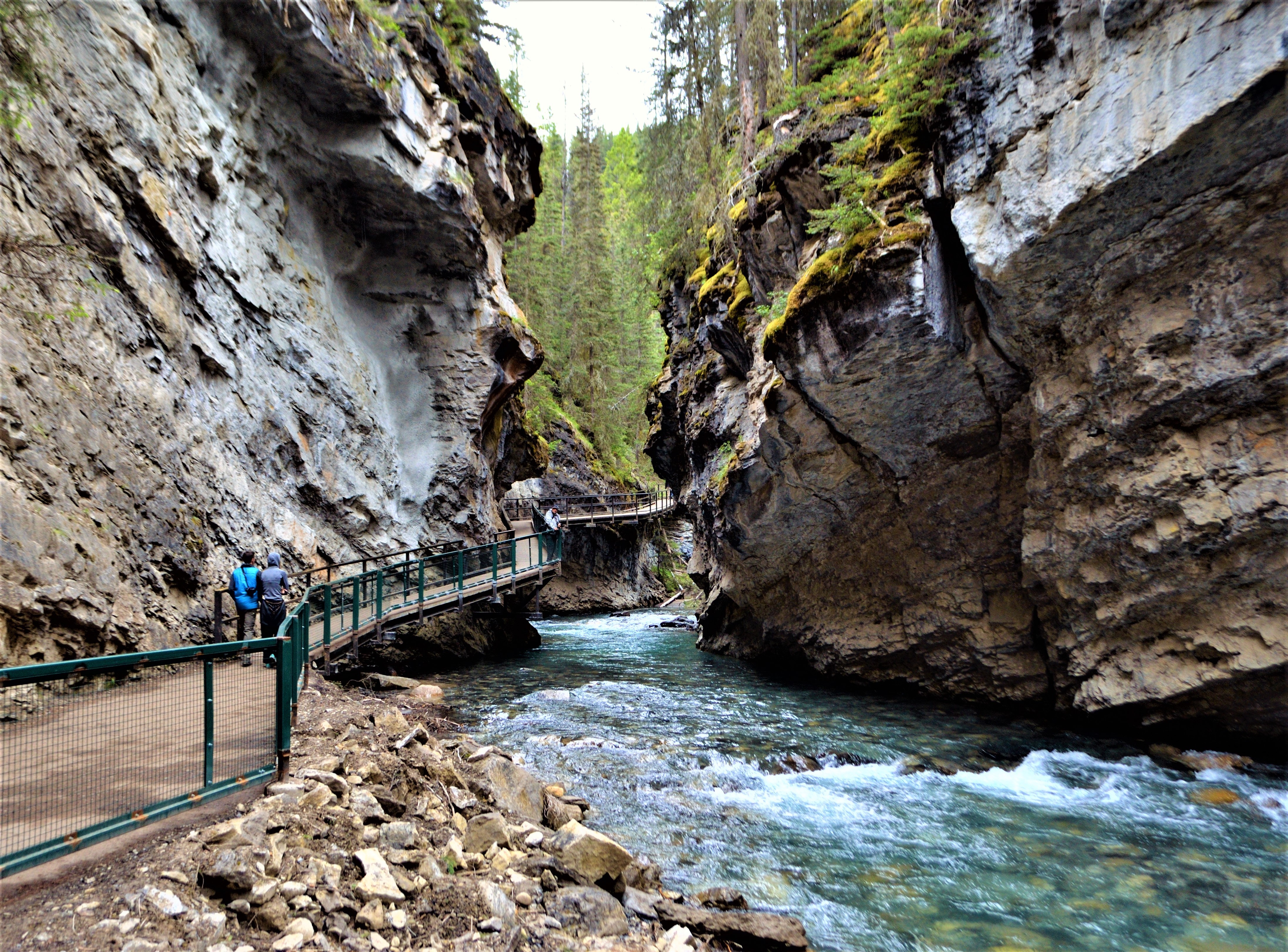
Black swifts
Banff National Park
Quick Facts
Recognized by their black plumage, streamlined body and long, curved and pointy wings. About 18cm long.
Eats flying insects.
Likes small crevices and waterfalls.
Life span of up to 16 years.
Status: Endangered.
The black swift is the largest swift in North America and is recognized by its black plumage, long and pointed wings and unique notched tail. They are often found living in small crevices within caverns or cliff faces.
They survive where very few animals can, including in canyons in Banff National Park. Despite their ability to live in remote areas, black swift populations have declined over the past 50 years. It is estimated black swifts have faced a 50% decrease in population since 1973. In 2019, the black swift was designated as an endangered species under Canada’s Species at Risk Act. Parks Canada has made the protection of this incredible species a top priority.
What is Parks Canada doing to conserve the black swifts?
Johnston Canyon provides critical nesting habitat for black swifts and is one of only two known nesting areas in Banff National Park. It is likely that black swifts will return every year to the same nesting sites in Johnston Canyon, but only if they have the space and security to nest without disruption. There are very few places to nest for the black swifts, and we need to provide protection for these sites.
The Johnston Canyon Trail is open for visitors to experience. To balance visitation in the area with the needs of the black swifts, Parks Canada has taken the following actions:
- issued a Restricted Activity Order from May 1 – November 15 to prevent off-trail access.
- increased signs and markers reminding visitors to stay on trail, and fencing to show visitors where they can go.
- increased monitoring in the closed areas.
- increased staff on site at Johnston Canyon and online information to educate visitors.
Black Swifts and Johnston Canyon

The walls of Johnston Canyon are the perfect place for black swifts to make a home. These swifts can live upwards of 16 years and may mate for life. They build a small, mossy nest in a cavity in the rock face and lay just one single egg!
Due to the sensitive nature of black swift nesting, Parks Canada has imposed a seasonal closure at Johnston Canyon to protect the black swifts.
Help us protect black swifts by respecting closures and remaining on the trail when visiting Johnston Canyon.
What is the current status of black swifts at Johnston Canyon?
Black swift nesting activity in the canyon has improved in 2021! Visitors who stay on trail are contributing to this success.
Five active black swift nests were confirmed in Johnston Canyon in 2021. This is the highest number of active black swift nests recorded in Johnston Canyon since 2004.
In 2020, three nesting pairs were spotted in Johnston Canyon, while only one or two active nests were recorded between 2005 and 2019. While the increase in nesting pairs is a positive sign for the black swift population, it is still below historical numbers: up to 12 active nests were counted annually in the 1970s and early 1980s.
What can you do to help?
You can help! Visitors can contribute to the recovery of species-at-risk, such as the endangered black swift by obeying seasonal closures in Johnston Canyon and giving wildlife their space.
Black Swifts and their nests are protected by law:
- In Banff National Park, Black Swifts and their nests are protected by law under the National Parks Act, the Migratory Birds Convention Act, and Canada’s Species at Risk Act.
- It is illegal to disturb Black Swifts and their occupied or unoccupied nests. Violators will be charged, be required to appear in court, and could pay fines up to $25 000.
- To report Black Swift nesting activity call 403-762-1470 and a Parks Canada Resource Conservation Officer will respond.
- If you witness anyone disturbing a Black Swift and/or its nest, observe, record and report this information to Banff Emergency Dispatch 403-762-1470, anytime day or night.
- Date modified :